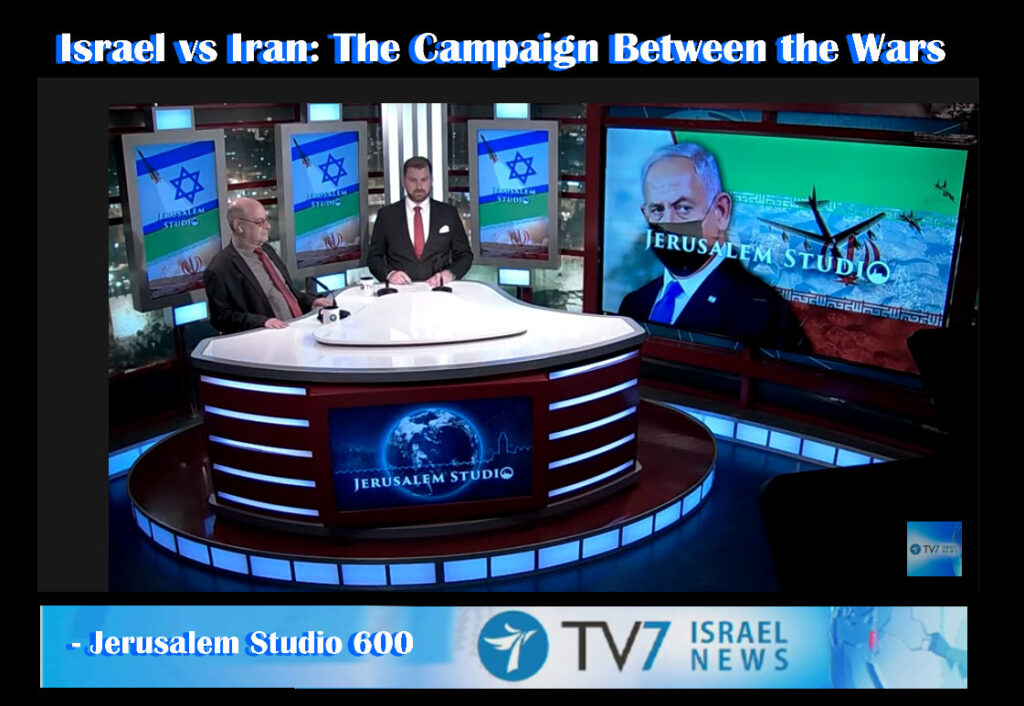
23 Apr 2021 Immediately after Israel won its 1948 War of Independence, it started worrying about what was immediately called “the second round.” That is, rather than a fight which ends with a knock-out or a tie but a handshake – it goes on and on for countless rounds. Soon enough it turned out that this analogy is too simplistic, because even between the major rounds of 1956, ‘67, ‘73 and ‘82 there were skirmishes, raids and hostilities. The participants obviously changed, but not the concept. Now what is known as “the campaign between the wars” pits Israel against Palestinian militias, Jihadi groups, Hezbollah – and potentially most explosively against Iran.
- Panel: – Jonathan Hessen, Host. –
- Amir Oren, TV7 Analyst and Host of Watchmen Talk. –
- Mr. Meir Javedanfar, Iran Lecturer, The Interdisciplinary Center Herzliya. –
- Dr. Menahem Merhavy, Research Fellow, Truman Institute, Hebrew University of Jerusalem.
Association of Geo-Strategic Analysis Rebuttals
REBUTTAL: IRAN IS IN ECONOMIC DIRE STRAITS ?. China is investing 400 billion dollars in Iran, Tehran is getting billions of dollars through Biden’s nuclear concessions. AND Iran military forces are undergoing billions of dollars of building its military forces, from drones to cruise missiles, subs to new advanced naval craft. Iran being part of China’s Maritime / Belt Road Initiative (BRI), will bring billions of dollars of income the international into Tehran’s pockets. Over 60 countries belong to the BRI.
REBUTTAL: IRAN IS INCAPABLE OF POWER PROJECTION? IRGC’s Mahan Air & Iran Air airlift power projection. Iran has deployed several thousand of its Armed forces from Iraq to Israel’s doorstep in Syria. These are not only IRGC, but Tehran’s regular military, the Artesh. The Artesh has deployed to Syria some of its finest special forces units, such as the 45th Special Forces Brigade, 65th NOHED Airborne Special Forces Brigade, to name a couple. IRGC’s Basij forces special forces branch Fatehin Special Forces deployed on Israel’s doorstep. Let alone the tens of thousands of mercenary/ poxy forces Iran has deployed in Syria.
Iran’s Airlift Power projection will grow, thanks to Washington’s Biden’s Iran concessions policies.
Boeing’s $16.5 billion blockbuster deal for 80 jets that withered in 2018 after the Trump administration revoked export licenses, will be approved.
IRGC Iran Air, the county’s national airline, made $36 billion worth of orders for 100 passenger aircraft from Airbus, 80 from Boeing and 20 regional jets from French aircraft maker ATR in 2016 and 2017, but the deals required U.S. export licenses because the aircraft rely on significant quantities of U.S-made components.
The order included 50 737 Max 8 single-aisle jets, 15 777-300ERs widebody aircraft, and 15 777-9s, a variant of the new and as-yet uncertified 777X. A second Iranian carrier, Aseman, ordered another 30 Boeing 737 Max jets, while a third carrier, Kish Air, ordered 10 Boeing jets.
According to the U.S. Treasury, Mahan Air is the airline of choice for the Islamic Revolutionary Guard Corps-Qods Force, facilitating its support to terrorism across the Middle East. Mahan’s regular flights to Syria.
Qeshm Fars Air, which originally operated as a commercial airline between 2006 and 2013, restarted operations in 2017, and its fleet of two B747 aircraft have operated regular cargo flights to Damascus, delivering cargo, including weapons shipments, on behalf of the IRGC-QF. Mahan Air employees fill Qeshm Fars Air management positions, and Mahan Air provides technical and operational support for Qeshm Fars Air, facilitating the airline’s illicit operations.
REBUTTAL: IRAN DOES NOT INTEND TO MAKE NUCLEAR WEAPONS Mr. Amir Oren’s facts do not stand up; his points are the same as were stated about North Korea and Nuclear Weapons. The Nuclear weapons plant which Iran was building in Syria with the help of North Korea points to nuclear weapons production. If this were not the case, Israel would not have bombed it in 2007. In fact, the treasure trove of thousands of pages of documents obtained by MOSSAD clear substantiates Tehran intends to build nuclear weapons.
Iran’s Nuclear Archive Shows the 2003 Restructuring of its Nuclear Weapons Program, then called the AMAD Program, into Covert and Overt Parts. Nuclear Archive” shows that in mid-2003, Iran was making decisions about how to decentralize and disperse the elements of its nuclear weaponization program, the AMAD program and its subsidiary Project 110, which included nuclear warhead development. The archive3 shows that the AMAD program intended to build five nuclear warhead systems for missile delivery and possible use in preparation for an underground nuclear test; an actual test would require a decision to proceed. The program was also partially designed to have its own independent uranium mining, conversion, and enrichment resources.
To conduct this assessment of the evolution of Iran’s nuclear weapons program, the Institute
In the least, Iran has reasons to produce small tactical nukes to EMP weapons.
Tehran could easily be secretly conducting low level nuclear test blasts.
Report Is Iran Secretly Conducting Low – Level Nuclear Test Blasts?




